Collections Item Detail
Block Line. Tri-state Chapter [NRHS] Newsmagazine. Vol. IX, No. V, Oct. 1981. Hoboken [Terminal] Rededication Commemorative Issue.
2010.007.0068
2010.007
Lukacs, Claire
Gift
Museum Collections. Gift of a friend of the Museum.
1981 - 1981
Date(s) Created: 1981 Date(s): 1981
Good
Notes: Archives catalog 2010.007.0068. Text of article and captions for A COMPREHENSIVE HISTORY OF HOBOKEN TERMINAL. By Frank Reilly, Copyright 1981, as published in Block Line. Tri-state Chapter [of the National Railway Historical Society] Newsmagazine. Volume IX, Number V, October 1981. Special: Hoboken Rededication Commemorative Issue. Article starts on page 8 and runs to the end of the issue, page [24]. Cover photo (page [1]) should be considered as part of the article and its caption is recorded here. ==== A COMPREHENSIVE HISTORY OF HOBOKEN TERMINAL. By Frank Reilly, Copyright 1981 Seventy-four years old and still standing tall while handling over 30,000 daily passengers from New Jersey's suburbs, Hoboken Terminal is a masterpiece of copper and concrete located on the Hudson River. The grand old terminal set the precedent for last of the great railroad terminals around the world and represents the fifth terminal on this site! The almost indestructible terminal has been the site selected by movie producers (i.e., Three Days of the Condor, Morris County Fare, etc.) and television advertisers (i.e., recent Macy's rug ads). Hoboken Terminal has also been graced by visits from numerous heads of state and other very important people. The story of Hoboken Terminal revives memories of the "Phoebe Snow", "Erie Limited", "Lake Cities", and "Lackawanna Limited". Hoboken Terminal also had at one time dual gauge trackage serving both the Morris and Essex Railroad and the Delaware, Lackawanna, and Western Railroad. The complex story of Hoboken Terminal begins over 140 years ago when the Morris and Essex Railroad was incorporated on January 29, 1835 to build a railroad from Newark in Essex County westward to Morris County, thus the name Morris and Essex Railroad. The line to Morristown was opened in 1838, to Dover in 1848, to Hackettstown in 1854, and finally to Phillipsburg, NJ in 1866. The eastward construction between Newark and Hoboken was not undertaken until the event of the Civil war. Until then, M&E passenger trains entered upon the NJ RR (later to become the Pennsylvania Railroad) and ran from Newark to the NJ RR's terminal at Exchange Place in Jersey City. Since the NJ RR was built to a gauge of 4' 10", the M&E had built their railroad to the same gauge to permit their trains to operate through to Jersey City without their passengers having to change trains in Newark. At this time, the officials of the M&E RR saw the need for their own terminal on the Hudson River and began planning for such a facility adjacent to the ferry terminal of the Hoboken Ferry Company. The major obstacle to achieving this dream, though was the high, solid rock Bergen Hill. The railroad overcame this problem when an agreement was entered into with the Erie Railroad which allowed M&E trains to use the Erie's tunnel under Bergen Hill. The M&E would then build a track connection between the Erie mainline and the M&E's newly proposed Hoboken rail terminal. The rail line from Newark to Hoboken cost $1,050,710.03, including the cost of the terminal! Strange as it may seem, M&E trains from all points west of Newark were forbidden from using the new railroad and terminal. When the M&E entered into the contract with the NJ RR to route all trains originating west of Newark and terminating on the Hudson River over that line, it required the M&E to operate their trains via that line until October 13, 1863 when the agreement expired. However, the M&E did operate a shuttle between Newark and Hoboken giving their riders the option of riding thru to Jersey City or changing trains at Newark for Hoboken. THE FIRST HOBOKEN TERMINAL was opened on November 14,1862. It was approximately 400 feet in length and had three tracks. Passengers of the M&E RR upon their arrival at the new terminal transferred to the Hoboken Ferry Company's boats bound for Barclay St., Canal St., and Christopher St. in New York City. Business boomed for the M&E RR and the need for a larger facility was realized. Planning quickly begun for the new facility, and to accommodate it, it was decided to fill in a portion of the marshland adjacent to the original terminal. THE SECOND HOBOKEN TERMINAL was built on the filled marshlands and opened on January 15, 1868. This wooden terminal was 650 feet in length, 75 feet wide and could accommodate "Twelve long passenger cars". A covered walkway was provided for passengers using the Hoboken ferries, something that was evidently not offered at the first terminal. This terminal had the unique distinction of serving trains of two different gauges; the M&E's standard gauge (4' 8?"), and the Delaware, Lackawanna & Western's broad gauge (6'). The dual gauge story is almost a lost piece of NJ rail history, let us salvage it now. The broad gauge DL&W leased the M&E effective December 31, 1868 and immediately began laying a third rail on the M&E's standard gauge tracks between Washington, NJ where the two lines intersected and Denville, NJ. At Denville, the construction of Boonton branch was just getting underway so the entire Boonton branch was built as a dual gauge line to West End Hoboken (Bergen Hill) where the dual gauge Erie RR was met and the DL&W/M&E trains could then pass through the Erie tunnel to gain access to Hoboken. This gave the DL&W its first direct rail access to New York harbor, a major growth factor of both the railroad and the community of Hoboken. The first broad gauge train between Washington, NJ and Hoboken ran on September 12, 1870, but since it was freight it did not operate into Hoboken terminal. It was not until almost three years later that the first broad gauge passenger train used Hoboken Terminal, on August 16, 1873. This broad gauge passenger train was the first interstate passenger train to use Hoboken terminal as well as the first train in the terminal to have a sleeping car. The train ran from Hoboken, NJ to Binghamton, Syracuse, and Oswego, NY and was pulled for most of its NJ run by the DL&W's broad gauge locomotive #9, the "Hudson". It is believed that this was also the first time parlor cars were used on trains in and out of Hoboken. Due to the problems of interchanging freight between two gauges, the DL&W decided to change from broad gauge to standard gauge. The decision to do this took place, incredibly on one day, namely May 27, 1876. In June, 1873 a major fire destroyed the second Hoboken terminal and a temporary structure was erected immediately following the tragedy. This building was to become: THE THIRD HOBOKEN TERMINAL outlived its two predecessors by more than twice the number of years than either were in service! In the Spring of 1884, the DL&W decided to plan and construct a new and much larger terminal to accommodate the rapid growth of passenger service. Plans to replace the 1873 temporary station, which was already ten years old, were evidently delayed awaiting the completion of the DL&W's own tunnel through Bergen Hill. The DL&W and Erie RR had many controversies over the use of DL&W trains through the Erie tunnel, so on May 29, 1869 the DL&W announced that it would build its own tunnel and be free of the troublesome Erie. Work did not commence until 1873, but labor problems and water seepage into the tunnel hampered work. Finally, on May 12, 1877 the tunnel was completed (three years behind schedule). Construction on the second Bergen Hill tunnel on the DL&W was not begun until 1906 as part of the overall Hoboken terminal complex that stands today. The original-'tunnel is now used for westbound trains and the second, or "new" tunnel is used for eastbound trains. At the west end of the tunnel (namely "West End") the tracks cross over the Erie RR on a truss bridge. To the south of these tracks can be seen the original tracks going into the Erie tunnel under Bergen Hill. Today, the Erie tunnel sis still used for freight trains. THE FOURTH HOBOKEN TERMINAL opened in 1885, work on it having begun in the Spring of 1884. The terminal had eight tracks covered by three sheds, side to side. At the turn of the century, DL&W management decided a much larger facility was needed and one that was not prone to fire as its predecessors. So plans were drawn for a new terminal, which is still in service today! The actual removal of the fourth terminal for the fifth was quite unusual. While plans were being made for its demolition, the terminal was destroyed by a spectacular fire on August 7, 1905! The fire was reported to be so hot that the copper facade melted and and dripped into the street. Seven months later on March 25, 1906 construction on the new terminal commenced with the pouring of concrete. THE FIFTH HOBOKEN TERMINAL was radically different from any other railroad terminal that had been built in Hoboken...or in the entire world! The DL&W's chief engineer, Lincoln Bush, designed the train shed and concourse area while Robert Murchison the terminal building and ferry dock. Upon its opening to the public at 6 AM on February 25, 1907, the magnificent rail complex signaled the beginning of the last great rail terminal construction projects. Fourteen tracks terminated under a unique and highly efficient trainshed designed by Mr. Lincoln Bush and subsequently patented by him. The uniqueness was that instead of having gigantic wooden structures covering several tracks, the Bush train shed had a series of small canopies, each covering two tracks, with openings in the sheds directly over the center of each track to exhaust the smoke from steam engines. The construction was all concrete and steel, with the roof of the shed being supported by ornate cast iron pillars. The canopies are concrete slabs, originally with glass panels for admitting light to the pedestrian walkways. However, due to the high costs of cleaning and breakage the skylights were later replaced with concrete slabs. The waiting room and train concourse was designed to accommodate 40,000 persons at one time! When the terminal was new, it contained a fine restaurant on the upper level overlooking New York harbor. The terminal also was equipped with a railroad YMCA, barber shop, cafeteria, and hospital. With the dedication of the new Hoboken terminal came other modes of transportation. Few people remember the large Public Service trolley terminal, a large two story structure, located where the NJT bus shed is today, adjacent to the PATH entrance. Surface trolley lines served the terminal as well as a spectacular elevated trolley line that climbed from Hoboken terminal to the top of Bergen Hill. This unique line ran down Observer Highway, and rose on a sloping trestle to scale the mountain. Beiow ground was another form of transit, the Hudson and Manhattan Railroad, more commonly known as the Hudson tubes. The H&M, which became PATH on September 1, 1962, commenced operations under the Hudson River from the DL&WTs new terminal to 19th Street and 6th Ave in New York City on February 25, 1908. The line was later extended to 33 St. Unfortunate for the railroad, this took a substantial number of passengers from the ferry operation. The H&M line to the downtown NY area was opened on August 7, 1909 and to Newark via Jersey City in January, 1911. With the abandonment of all ferry service in 1967, the overwhelming number of ferry passengers were transferred to the PATH svstem, with a few opting for the bus service to the Port Authority terminal on 42nd Street. For many years commuter trains and intercity trains shared Hoboken terminal, then ever so slowly, the long distance trains were discontinued, until finally the famous "Phoebe Snow" made its last run from the terminal on November 27, 1966, followed by the last long distance intercity train, the "Lake Cities" on January 5, 1970. During the 1960's and 1970's the grandness of the terminal faded with each train discontinuance until the terminal deteriorated into an unappealing derelict covered with a thick layer of dirt and grime. With each rain came new leaks and more disintegration. In fact, it appeared for a while that this magnificent structure which had outlived two world wars, among other things was finally on its deathbed. But in 1976, an ironic happening took place, a new railroad was formed...Conrail, a railroad that did not want the terminal. But it was through this event that the terminal was saved and restored to its grandeur that we witness today. The New Jersey Department of Transportation was permitted by federal legislation to purchase any rail properties served by commuter trains exclusive of Amtrak's North East Corridor and major freight lines designated by Conrail. So on April 1, 1976, NJDOT became the owner of the decrepit terminal complex. With over 30,000 people using the complex each day with no alternative, NJDOT decided to explore the possibility of rehabilitating the entire facility. First, NJDOT obtained $80,000 from the Department of Environmental Protection to be matched by a like amount from NJDOT for work on the beautiful copper facade. Additional funds were secured from the state Economic Development Authority with more funds coming from NJDOT. A total of 4.8 million was raised for the complex job of restoring the terminal. Work on the train platform canopy started in early 1980 which transformed them from dark, rusty areas into bright attractive areas. The work crews first sandblasted the shed, then painted it, and finally added such features as new lights. Work on the canopies started on track 15 and continued to track 1. Also included in this work was replacement of drain pipes and some of the ornamental cast iron rings that have cracked over the years. However, the most spectacular work took place in the main waiting room where the original tiffany stained glass skylight was restored. The skylight was painted over during the second world war as part of air raid precautions imposed all along the east coast. The colorful sky-light remained covered for almost 40 years until finally in 1980 work crews began stripping the paint and making repairs to all pieces that were cracked. In addition, the 90' by 100' waiting room received a thorough cleaning and painting to reveal the artistry of its construction. When in the terminal, take special note of the railing on the grand staircase that leads to the upper level. This building is truly a gem of gems and requires a slow, careful scrutiny to reveal the many pieces of exceptional workmanship. The terminal rehabilitation project was a three stage program, which incidentally was completed on schedule. First, the roof work and facade was re-built, then the train sheds followed, and finally the waiting roof area was refurbished. Those who use the terminal step back to the turn of the century, a time where architectural splendor was abundant, so unlike the present where cinder block construction is the rule of thumb. A leisurely visit to Hoboken terminal is strongly recommended. It is easy to reach by former E-L trains or via PATH from Newark Penn Station or NYC. In addition to the terminal, the vintage Lackawanna electrics and more modern push-pull sets always seem at attention under the train shed. Although much has been done to the terminal, it is sad to report that one portion of the complex that at one time was highly active continues to deteriorate and may be too late to save. I speak of the ferry slips on the river side of the terminal that have been left unattended for over ten years now. Perhaps because of the discontinuance of ferry service the railroad opted not to do any more than the absolute minimum of maintenance on the slips. When the terminal was opened in 1906, it had six active ferry slips and the operation that was once operated by the Hoboken Ferry Co. The northern two were for boats to 23rd St., the middle two for Christopher St., and the southern two for Barclay St., all three termini in Manhattan. The 23rd St. ferry made its last run on October 17, 1946, the Christopher ferry lasted to March 30, 1965, and the final run of the Barclay St. ferry was on November 22, 1967...complete with champagne, the Hoboken High School band and life jacket souvenirs for the passengers on the last trip. One of the most interesting events in the history of Hoboken terminal was during the year of 1956 when the Erie RR merged most of its passenger operations into the Lackawanna's terminal. Due to the high costs of maintaining a waterfront terminal, the presidents of the two railroads proposed a merger into Hoboken. Since the Erie's Pavonia Ave. terminal in Jersey City was in such poor condition and renovation would have been quite expensive, the Erie quickly agreed to this proposal. Thusly, on October 13, 1956 phase one of the changeover took place with the diversion of all non-rush hour and intercity passenger trains into Hoboken. On march 25, 1957 all Erie rush hour trains began using the new terminal, resulting in 142 DL&W trains and 79 Erie trains (eastbound trains only, double these figures for the amount of trains in one day). The Erie added 11,000 new passengers to the 27,000 DL&W riders already using the terminal each day. Erie Northern Branch trains and New York, Susquehanna, and Western trains still continued using the Pavonia St. facility until December 12, 1958 when Northern Branch trains had a new one mile connection track complete. This signaled the end for the Erie terminal, as Northern Branch trains could now run into Hoboken and NYS&W trains terminated at Susquehanna transfer (now a park and ride facility under the Lincoln tunnel entranceway in North Bergen). Perhaps the most significant celebration at the terminal took place more than fifty years at Hoboken terminal, when the suburban lines of the DL&W were electrified. On hand to operate the first electric train out of Hoboken was Thomas Alva Edison. Precisely at 11:02 AM on September 3, 1930, Mr. Edison waved to the large crowd that had gathered for the event, then notched out the controller to move the first electric commuter train out of the terminal. The first train, with 800 guests on board, operated to Montclair, terminus of the first phase of electrification. The electrification was extended to South Orange on September 22, and to Morristown on December 18, 1930. On the Gladstone Branch (P&D), the electrification was completed from Summit to Gladstone on January 6, 1931. Each opening was accompanied by large celebrations. The electrification became fully operational on January 25, 1931. Fifty years later, on January 25, 1931, the Tri-State Railway Historical Society erected a plaque in Hoboken commemorating the event. That plaque may be seen today in the waiting room to the right of the ticket windows. The original railcars and electrical equipment are still in service today, a great tribute to those who designed, built and maintained the system. Another interesting facet of the terminal can be seen just outside the main waiting room on Hudson Place. In the middle of the square may be seen a statue of Samuel Sloan, president of the DL&W from 1868 until 1899. The story behind this statue is very interesting and unusual. A wealthy friend of Mr. Sloan felt that Sloan had done such an outstanding job in building the DL&W that he and his efforts should be remembered. So John Starin commissioned a sculpture, George E. Bissell to make a life sized statue of Sloan, which commenced on March 1, 1887. It was completed by having the pure bronze cast in Paris and on August 1, 1889 it was shipped to the United States. Mr. Sloan had no knowledge of this surprise, and when Mr. Starin announced the arrival of the masterpiece, the shocked Sloan refused to have it exhibited during his lifetime. It was put into storage until his death, and when the new Hoboken terminal was opened, the statue was erected just outside on Hudson Place, in full view of the general offices and the busy terminal operation. Hoboken terminal hosted the trains operated by the Erie and Lackawanna railroads until the two merged on October 17, 1960 to become the Erie- Lackawanna Railroad. Effective that date, all the trains were E-L trains, but even today railroaders refer to trains as being on the "Lackawanna" side or "Erie" side. On the merger date, the president of the DL&W, Perry Shoemaker departed Hoboken in his private car #99 for the last time en-route to the new E-L headquarters in Cleveland. According to Tri-State Charter member Tom Taber, every whistle in the yard blasted loudly as a salute to Mr. Shoemaker and what he did for the railroad, a touching finale he never forgot. A similar experience occurred shortly after Tom Taber's death in May 1975 when the E-L management dedicated train #629, the "Tom Taber Express". This train had the distinction of being the only named train in New Jersey. Upon the first run of this train, a large banner was placed on front of the 629, the fastest electric train operating in New Jersey! As the eight car train departed Hoboken on its maiden run, every whistle on every locomotive, switcher, and electric screamed a loud and long blast to the memory of Tom and the first train named in his memory. It was an experience that touched everyone present in Hoboken that day and one the author will never forget. Hoboken terminal has played host to thousands of immigrants from Europe, thousands of intercity travelers from as far as Chicago, tens of honeymooners to Niagara Falls, soldiers en-route or returning from war, occasional riders or tourists, and the tens of millions of commuters who managed the daily routine of commuting to work on the DL&W, and later the Erie. It is all these people, who over the years from 1906 to the present, and into the future will pass under the graceful lines of Hoboken terminal for which this terminal was built, a terminal that has escaped the cinderblock and chipboard construction techniques of this day and age. Yes, Hoboken is truly the survivor. It is the last great rail terminal on the Hudson River. [end article] --------- Captions for photographs, illustration and map: Caption for photo on cover, page [1]: Hoboken Terminal prior to its completion in 1907. This faithful structure still serves 30,000 commuters a day, 74 years after its completion. Caption for photo, page 8 top: HOBOKEN TERMINAL #4... was none other than this three sheded [shed] structure. Unfortunately, no pictures of the previous terminals survive, and this shot is the only one known to exist of the fourth terminal. None [note] early semaphore system as well as the ferry building in the rear. This station is the one that burned down in the 1906 [note: actually 1905] terminal fire. Photo from the Frank Rellly collection. Caption for photo at bottom of page 9: This early postcard of the new terminal gives a view of the grand concourse when it has an all glass roof. Note the ramp leading to the ferry slips, F. Reilly collection. Caption for photo at the top of page 10: An extremely rare shot of the interior of the Christopher St. ferry terminal in New York City. Note five cents fare and gift concession in the background. Author's collection. Caption for photo at the bottom of page 11: Prior to the electrification of the Lackawanna suburban lines, all commuter trains were steam powered, and thusly locomotives had to be turned at both ends of their route. Here DL&W camelback #999, a 4-4-0 is turned at Hoboken roundhouse. The turntable remained in use until only a few years ago. F. Rellly collection. Captions for two photos on page 12: WEST END … or the western end of the Bergen Hill tunnels is seen here in this 1920 photo. Note in distance the older swing bridge at right and the new lift bridge at left. The four tracks veering off to the right constitute the eastern most end of the Boonton Branch. (BELOW) A complete view of the Hoboken terminal complex seen from Bergen Hill. The actual passenger terminal is in the background to the right, while the massive DL&W freight yards and coal facility are to the right. The tall stack belongs to the railroad power plant, which only until recently was coal powered. Note the two Baldwin switchers in the lower left hand corner as well as the early cab units near the turntable in the lower right hand corner. Could they be waiting to pull the "Phoebe Snow" on another record run to Buffalo. Both photos courtesy of Frank Reilly. Caption for two photos on page 13: (ABOVE) In the early thirties, the Lackawanna railroad painted two eight car trans in white with black trim and gold lettering. The two sets were used for express trains during the morning and evening rush hours. Unfortunately, due to the breaking of the trains for maintenance purposes, the fancy white scheme did not last long. (BELOW) The Lackawanna Limited, one of the intercity trains that operated into Hoboken is shown here as crews prepare it for another on time trip. The train consists of all heavyweight Pullman cars powered by a heavy steam locomotive "on the point". Both photos courtesy of F. Reilly. Caption for two photos on page 14: (ABOVE) This early photograph show the Hoboken Ferry Company building prior to its destruction in the 1906 [note: actually 1905] Hoboken fire. At this time the ferry building and railroad building were separate buildings connected only by a covered walkway. (BELOW) The Hoboken terminal complex from the water was just as busy as on land. Note the main terminal in the distance and the freight buildings in the foreground where the lighter is tied up. Frank Reilly collection. Caption for photo at bottom of page 15: This early photograph, taken soon after the completion of the terminal shows the trolley loop and vehicle entrance to the ferries. Trolley track remains can still be seen here embedded in the belgium [sic - Belgian] block streets. Author's collection.] Caption for photo on page 16: MARINE ACTIVITIES ...at Hoboken Terminal were at one time quite active. Here an overhead gantry crane on its own tracks removes containers from barge #153, as part of the Lackawanna steam tug fleet rests in the background. The containers probably were filled with cement as witnessed by the labeling on the gondolas. Frank Reilly collection. Caption for map on page 17: HOBOKEN PASSENGER YARD ...can best be described by looking at this map of the complex facility. Reprinted with permission from the book "Tidewater Terminals of the Erie-Lackawanna Railway" by William H. Sheppard. [Note: Sheppard's initials and 1975 date with copyright notice at bottom right.] Caption for two photos on page 18: (ABOVE) After the transfer of all Erie operations to the Lackawanna Terminal, scenes like this were possible. Here, a westbound MU train complete with a rail post office car passes Erie diesel power laying over before the westbound commuter runs. (BELOW) During the fifties, the Lackawanna purchased a number of electric baggage trucks to handle parcels off of inbound passenger trains. Here, C. Cook, a Lackawanna mail handler brings a load of postal sacks to an outbound train. F. Reilly collection. Caption for two photos on page 19: (LEFT) Prior to the departure of Erie #1, on the first day of merged operations into the DL&W terminal, Max Plum (general stationmaster), G.C. White (Erie vice president), J. Craddock (M&E division superintendent), and M.P. Nelson (Lackawanna assistant to the President) stand at the head of track 17 as the operations of the two big railroads merged into one. (BELOW) Two Erie E-units roll past the car yard in Hoboken terminal on another intercity run west. Note the "fast freight" cars behind the locomotive. F. Reilly library. Caption for photo at the bottom of page 20: Another early shot of the unelectrified Hoboken terminal. Note the ornate detail on the façade of the train shed including lamps above each platform, some of which are already missing their globes. F. Reilly collection. Caption for two photos on page 21: (ABOVE) In the late 1950's the Lackawanna, in an effort to survive cancelled the famous Phoebe Snow passenger train that ran from Hoboken to Buffalo, N.Y. But on August 1, 1963, the Erie-Lackawanna reinstituted the Phoebe Snow with the same equipment as before. Here, a group of train lovers in Binghamton, NY praise E-L for their move. Photo by William B. Young. (BELOW) A group of officials inspect the new mail facilities in Hoboken after the Lackawanna signed a big contract with the U.S. Postal Service in the late fifties. F. Reilly collection. Caption for two photos on page 22: (ABOVE) Lackawanna ferrys [ferries] plied the Hudson up until 1967 when competition from the tunnels and PATH caused the deficit to be too much for the railroad. Here the Erie-Lackawanna ferry Elmira passes a string of barges on its way to Hoboken in 1966. (BELOW) Hoboken terminal operations as they appear today. On the right is a diesel powered push-pull type train (ex-Erie and Lackawanna trackage) and on the left are vintage Lackawanna electrics (ex-Lackawanna trackage). F. Reilly archives. Caption for two photos on page 23: (LEFT) On January 25, 1981 the Tri-State Railway Historical Society presented to NJ Transit this plaque commemorating fifty years of electrified service on the Morristown line, Montclair branch, and Gladstone branch. Shown are Tri-State Directors [Frank] Reilly and [Donald L.] Dorflinger as the plaque is presented to NJ Transit. Today, the plaque may be seen directly next to the ticket windows in Hoboken terminal. (BELOW) This is an interior view of the Hoboken train shed prior to its rehabilitation. The electric train is on track two. Track one is much shorter, but at one time extended the full length of the train shed. When the new access to PATH was constructed the track was cut back due to the expected flow of commuters from the cancelled ferry service. F. T. Reilly collection. Caption for photo on back cover, p... [truncated due to length]
![pg [1] cover; Lackawanna Terminal ca. 1907](https://d8e7jbdw4fu0e.cloudfront.net/11047/e9be7180-fa85-11ed-a641-b3912f9925a9-utuvJEy.lg@2x.jpg)

![pg [1] cover; Lackawanna Terminal ca. 1907](https://d3f1jyudfg58oi.cloudfront.net/11047/image/e9be7180-fa85-11ed-a641-b3912f9925a9-uFeADRN.tn.jpg)
![pg [2]](https://d3f1jyudfg58oi.cloudfront.net/11047/image/eaf061d0-fa85-11ed-a641-b3912f9925a9-uFeADc6.tn.jpg)
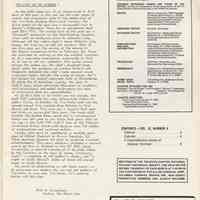

![pg [5]](https://d3f1jyudfg58oi.cloudfront.net/11047/image/ee848510-fa85-11ed-a641-b3912f9925a9-uFeAFOn.tn.jpg)
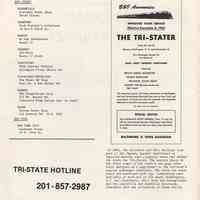
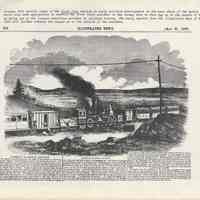
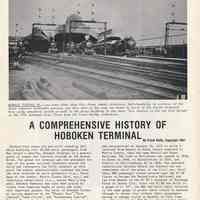
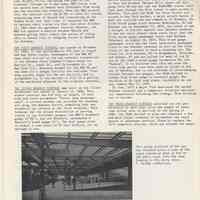
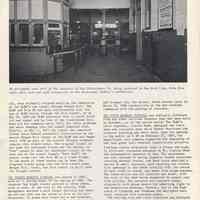
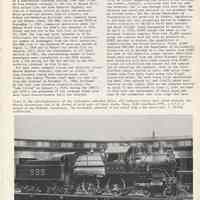
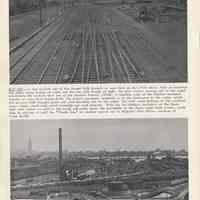
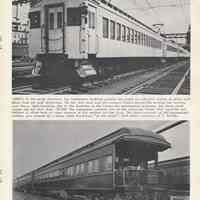
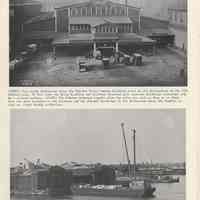
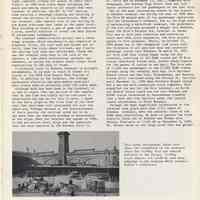
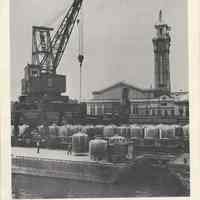
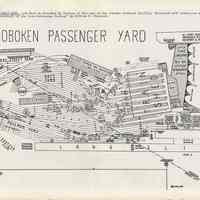


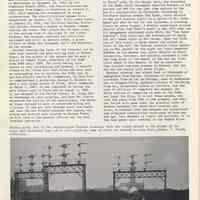
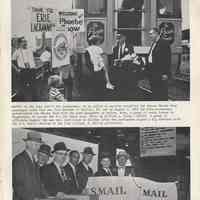
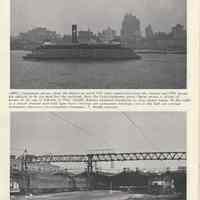
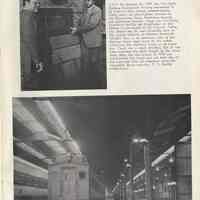
![pg [24] back cover](https://d3f1jyudfg58oi.cloudfront.net/11047/image/052e1060-fa86-11ed-a641-b3912f9925a9-uFeAPHS.tn.jpg)
![Block Line. Tri-state Chapter [NRHS] Newsmagazine. Vol. IX, No. V, Oct. 1981. Hoboken [Terminal] Rededication Commemorative Issue. picture number 26](https://d3f1jyudfg58oi.cloudfront.net/11047/image/427bb240-fb7d-11ed-a554-99bdff73597f-uFlLtbX.tn.jpg)